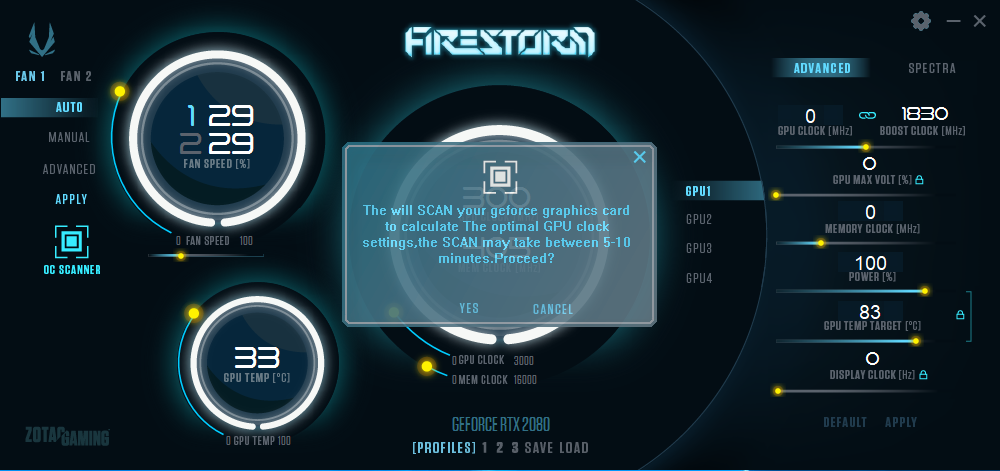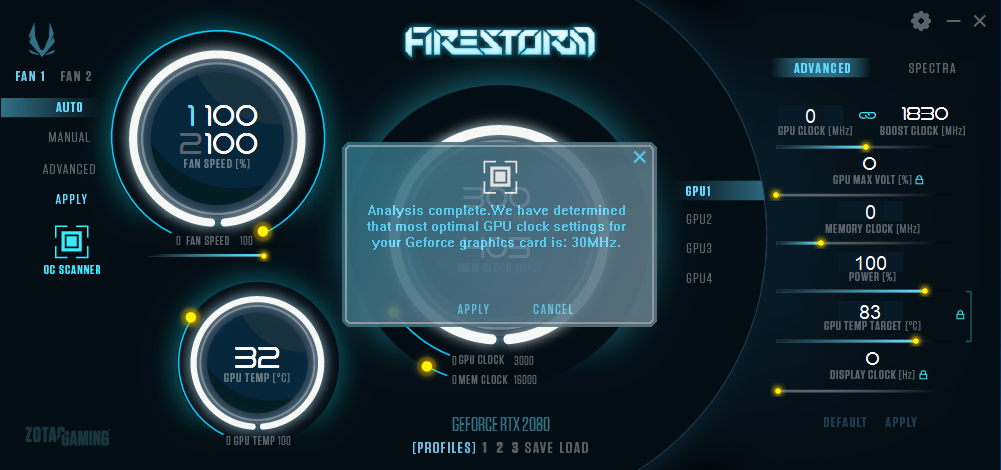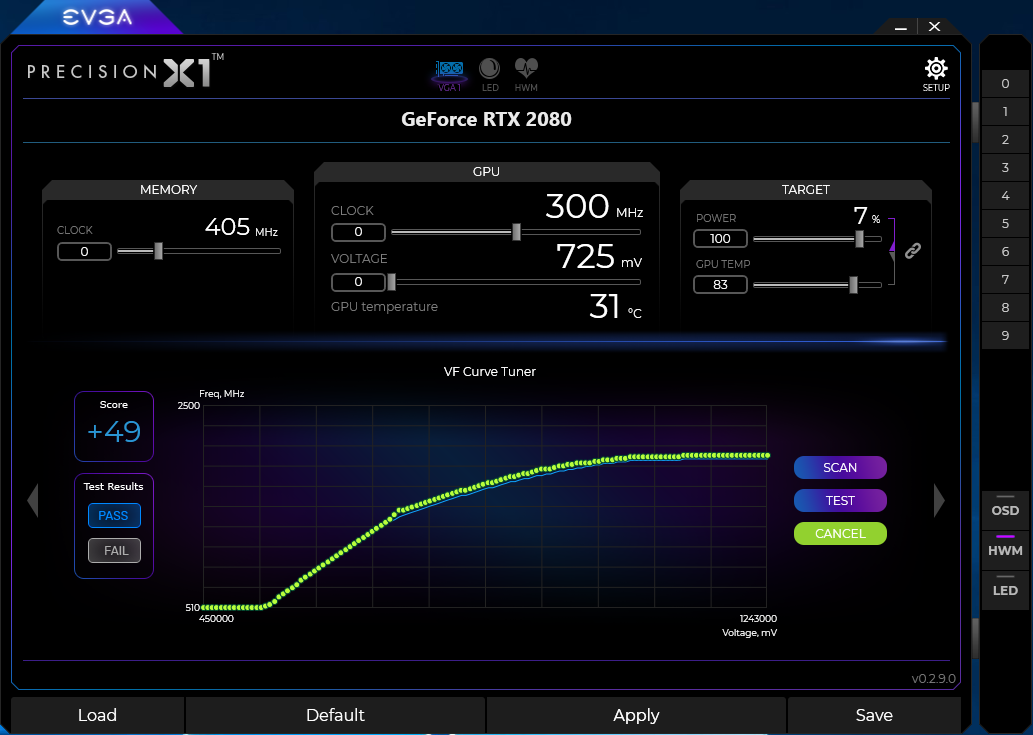Zotac Gaming GeForce RTX 2080 AMP Review: Cooler Than Nvidia’s Founders Edition
Why you can trust Tom's Hardware
Overclocking
Zotac bundles the Gaming GeForce RTX 2080 AMP with its own utility for overclocking, fan control, and lighting. We received an early build of this software, called Firestorm, prior to the Turing family launch. However, for today’s review, we’re using the latest build downloaded from Zotac’s website.
Despite the newer status of version v.3.0.0.001E, Firestorm still has some optimization that needs to be performed. Zotac successfully integrated Nvidia’s Scanner API/DLL package, exposing it through the OC Scanner button, and the process does operate. However, it yielded anywhere between a 4 to 30 MHz overclock from our sample, depending on the run. In contrast, EVGA’s Precision X1 tool pushed the GPU clock rate between 49 and 52 MHz higher.
Beyond what the Scanner tool was able to achieve, we toyed with GDDR6 and GPU offsets to keep TU104 at 2.05 GHz without a problem through several runs of Metro: Last Light. Here's the thing, though: Nvidia specifically says the Scanner’s algorithm is designed to use a taxing math-based workload. Just because we got extra headroom out of Zotac’s card in Metro doesn’t mean this overclock would be stable across other games or compute tasks. For everyday use, consider sticking with the VF Curve Tuner’s recommendations.
MORE: Best Graphics Cards
MORE: Desktop GPU Performance Hierarchy Table
MORE: All Graphics Content
Get Tom's Hardware's best news and in-depth reviews, straight to your inbox.
-
John Nemesh "Just buy it", right? Nevermind that it's essentially the same performance as a card that costs hundreds less...Reply -
Wes006 Hey John Nemesh, when your whole life flashes before your eyes, how much of it do you want to spend trolling every Tom's Hardware article with "Just buy it"? Not everyone shares the same opinion as Avram Piltch; you don't have to be a sheep and spread the toxicity.Reply -
Specter0420 I just picked up a refurb GTX 1080 a few days ago for $430, I couldn't wait, my 1060 6GB was giving me issues and the warranty was about to expire at microcenter (so it was $250ish with the trade up, including a new 2 year microcenter warranty). After reviewing these benchmarks I feel good knowing I made the right decision. Saving $400+ while only losing 5-25 FPS is an easy decision for me.Reply -
aceb0079 Lol ' prices change rapidly '. No, no they don't, not for consumers buying thru normal channels, including online. Wish they didn't spread misinformation like that, smh.Reply -
680lightning Price did change rapidly for 2080Tis. Keep the ''Lol'' to yourself because pretty sure it's not possible for you to follow stores from different countries to check availability of some of these AIB cards. Maybe you aren't even a potential buyer!Reply



